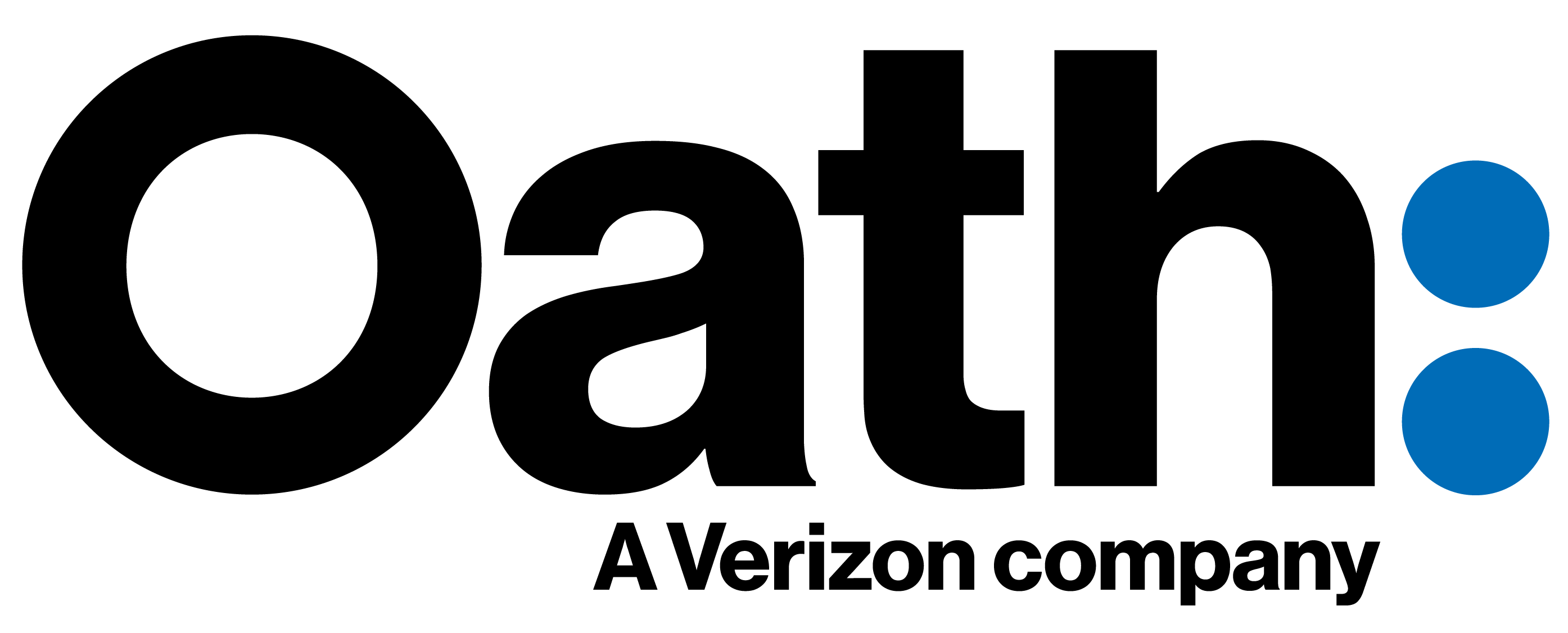Recent Posts
Whitelisting is dead
- laura
- Jun 6, 2018
 A decade or so ago I was offering whitelisting services to clients. It was pretty simple. I’d collect a bunch of information and do an audit on the customer’s sending. They’d get a report back identifying any issues that would limit their chances at acceptance. Then I’d go and fill in the forms on behalf of the client. Simple enough work, and it made clients feel better knowing their mail was whitelisted at the various ISPs.
A decade or so ago I was offering whitelisting services to clients. It was pretty simple. I’d collect a bunch of information and do an audit on the customer’s sending. They’d get a report back identifying any issues that would limit their chances at acceptance. Then I’d go and fill in the forms on behalf of the client. Simple enough work, and it made clients feel better knowing their mail was whitelisted at the various ISPs.
When email filters were less complex and more binary, whitelists were a great way for receivers to identify which senders were willing to stand up and be held accountable for their mail. Over time, whitelists became much less useful. Filtering technology progressed. Manual whitelisting wasn’t necessary for ISPs to sort out good mail from bad.
The era of whitelisting is over.
In fact, three of the major whitelist providing ISPs were AOL, Yahoo, and Verizon; all three are now a part of OATH. The Verizon whitelist page now redirects to postmaster.aol.com. New requests to signup for the AOL whitelist are rejected with the message that AOL whitelisting is no longer available or necessary. Yahoo has a “new IP review” form rather than a whitelisting form.
Whitelisting is dead.
Even the various certification and whitelisting services have mostly gone away. Both Habeas and Goodmail failed to achieve a profitable exit event. Of course, Return Path is still around, but they have built a platform of tools and services unrelated to whitelisting or certification.
Now senders are going to have to focus on sending mail that people ask for and want in order to make it to the inbox.
Another day another dead blacklist
- laura
- Jun 5, 2018
FADE IN
EMAILGEEKS.SLACK.COM #email-deliverability
It is morning in the channel. The regular crowd is around discussing the usual.
JK, smart, competent head of deliverability at an ESP asks: Anyone familiar with SECTOOR EXITNODES listings and have insight into what’s going on if listed?
ME: Uh, that’s the Tor Exit Nodes list. They think your IP is used by Tor. That’s all sorts of weird. Let me do some digging.
5 minutes of google searches, various dig commands and a visit to the now non-existent sectoor.de website show that the sectoor.de domain expired and is now parked.
ME (back in channel): It looks like the blacklist domain expired and is now parked. So they’re listing the world and nothing to worry about. Not your problem, and not anything you can fix.
JK: Like a UCEProtect fiasco – not just us but everyone?
ME: No, more like the spamcannibal fiasco. The domain expired and so it’s listing the world.
ME: The world would be a better place without MXToolbox worrying about every stupid blocklist. Or even if they would follow the blocklist RFC check for expired domains before panicking the world.
SCENE
What does mitigation really mean?
- laura
- Jun 5, 2018
It is a regular occurrence that senders ask filters and ISPs for mitigation. But there seems to be some confusion as to what mitigation really means. I regularly hear from senders who seem to think that once they’ve asked for mitigation that they don’t have to worry about filtering or blocking at that ISP for a while. They’re surprised when a few weeks or even days after they asked for mitigation their mail is, one again, blocked or in the bulk folder.
Botnet activity warning
- laura
- Jun 2, 2018
A bit of advice from the folks at the CBL, posted with permission and some light editing. I’ve been seeing some folks report longer connection times at some places, and this might explain some of it. It’s certainly possible, even likely, that the large ISPs are getting a lot of this kind of traffic.
A botnet, likely a variant of cutwail, has been for the past several years been specializing in using stolen credentials, doing port 25/587 SMTP AUTH connections to the spoof’d users server, and attempting to relay thru the connection to elsewhere. They will also, in some cases, attempt to log into the MX IP using a brute force attack against the email address. Other miscreants try the same thing with IMAP or POP or even SMTPS.
If they manage to compromise an email account, they use the account to send spam. For corporate accounts they can steal employee identities, request wire transfers, and send out corporately authenticated spam. If they get it, game over, the whole account is compromised and they can and do wreak havoc.
This has been going on for a couple of years, and now is the largest volume of spam from botnets. Cutwail is not the only botnet doing AUTH attacks, but appears to be the most prolific. Attacking POP and IMAP appears to be more recent, and is more related to spear-phishing (spamming executives) and other bad things.
In the last month or two, the behavior has changed a bit. The infections are trying to establish as many connections simultaneously as it can get away with. This is similar behavior to ancient or unpatched versions of qmail. This is swamping some servers by tying up a significant number (or even all) of the TCP sockets available.
The CBL is recommending that folks check their mail servers. If the mail server has a “simultaneous connection per IP limit”, it should be set to some limited number. If it’s not set then set it. Otherwise, your server is at risk for being unable to handle real mail. Make sure your IMAP and POP are secured as well as they are being targeted, too.
The XBL can also help with this. But securing your server is the first step.
SpamCannibal is dead
- steve
- May 30, 2018
The SpamCannibal blacklist – one that didn’t affect your email too much but which would panic users who found it on one of the “check all the blacklists!” websites – has gone away.
It was silently abandoned by the operator at some point in the past year and the domain registration has finally expired. It’s been picked up by domain squatters who, as usual, put a wildcard DNS record in for the domain causing it to list the entire internet.
Al has more details over at dnsbl.com.
If you run a blacklist, please don’t shut it down this way. Read up on the suggested practice in RFC 6471. If you just can’t cope with that consider asking people you know in the industry for help gracefully shutting it down.
Blacklist health checks
If you develop software that uses blacklists, include “health check” functionality. All relevant blacklists publish records that show they’re operating correctly. For IP based blacklists that means that they will always publish “127.0.0.2” as listed and “127.0.0.1” as not listed. You should regularly check those two IP addresses for each blacklist and if 127.0.0.1 is listed or 127.0.0.2 isn’t listed immediately disable use of that list (and notify whoever should know about it).
For IPv6 blacklists the always listed address is “::FFFF:7F00:2” and the never listed address is “::FFFF:7F00:1”. For domain-based blacklists the always listed hostname is “TEST” and the never listed hostname is “INVALID”. See RFC 5782 for more details. (And, obviously, check that the blacklists your software supports out of the box actually do implement this before turning it on).
If you use someone else’s blacklist code, ask them about their support for health checks. If your mail filter doesn’t use them you risk either suddenly having all your mail go missing (for naive blacklist based blocking) or having some fraction of wanted mail being delivered to your spam folder (for scoring based filters).
UCEProtect and GDPR fallout
- laura
- May 26, 2018
First thing this morning I got an email from a client that they were listed on the UCEProtect Level 3 blacklist. Mid-morning I got a message from a different client telling me the same thing. Both clients shared their bounce messages with me:
Read More#GDPR
- steve
- May 25, 2018
Twitter has some opinions on #GDPR.
— @rianjohnson (Yes, the director of The Last Jedi)
I subscribed to what?
- laura
- May 24, 2018
Tomorrow is GDPR day. That’s the day when the new Global Data Protection Regulations take effect in the EU. I’m sure everyone reading this blog has seen dozens, if not hundreds, of blog posts, articles, webinars, and guidance docs about how to comply. I’m not going to rehash it because, other folks know this better than me.
There are a some things I’m finding fascinating watching this whole GDPR thing.
First, the number of companies who have my addresses and I don’t know why. Take Newsweek (yes, the magazine people). They’re sending GDPR notifications to my LinkedIn address. I can’t figure out why they’re harvesting / buying addresses from LinkedIn. Then there’s SALESmango who are some company that started spamming me a few years ago and refuses to accept unsubscribe request. They’re sending me opt-in requests. Yeah, no, go away. I told you to stop, but wow, you won’t.
Another interesting piece is just how much I’ve signed up for over the last 18 – 20 years I’ve been using this set of addresses. Wow. So much mail. And, generally, I thought of myself as relatively careful in who I gave email addresses to. I don’t normally go around dropping addresses into forms but even a couple a month adds up over 20 years.
Then there are the companies violating CAN SPAM in one way or another. Sending mail to unsubscribed addresses and refusing to include an opt-out link are the two things I’ve seen regularly. Yeah, no. I think it’s safe to say that if I’ve opted out from receiving your mail, you should probably put my data away in a dark closet and not touch it again. But.. but.. but… But nothing. Go away. As for the lack of an unsubscribe link, get over yourself. You’re not that special. I don’t think that this really is something that counts for exemption.
Also, is there an official template? So many of these emails look identical. I have to give credit to whomever did it first. Because if plagiarism is the sincerest form of praise, you have an entire industry praising you.
Finally, it’s been amusing to watch the general frustration with all the GDPR mail. It seems many people are getting tired of the deluge. That’s OK, though, it should end by Saturday. Or so we can only hope.
OATH and Microsoft updates
- laura
- May 23, 2018
 I’ve seen multiple people asking questions about what’s going to happen with the Yahoo and AOL FBLs after the transition to the new Oath infrastructure. The most current information we have says that the AOL FBL (IP based) is going away. This FBL is handled by the AOL infrastructure. As AOL users are moved to the new infrastructure any complaints based on their actions will come through the Yahoo complaint feedback loop (CFL). The Yahoo CFL is domain based. Anyone who has not signed up for the Yahoo CFL should do so.
I’ve seen multiple people asking questions about what’s going to happen with the Yahoo and AOL FBLs after the transition to the new Oath infrastructure. The most current information we have says that the AOL FBL (IP based) is going away. This FBL is handled by the AOL infrastructure. As AOL users are moved to the new infrastructure any complaints based on their actions will come through the Yahoo complaint feedback loop (CFL). The Yahoo CFL is domain based. Anyone who has not signed up for the Yahoo CFL should do so.
When registering you will need each domain and the selectors you’re planning on using. Yahoo will send an email with a confirmation link that needs to be clicked on within a short period of time in order to activate the FBL. Microsoft’s SNDS program had an outage at the end of last week. That’s been fixed, but the missing data will not be back populated into the system. This has happened a couple times in the past. It seems the system gets a live feed of data. If, for some reason, the data is interrupted, then it’s gone and doesn’t get populated.
Microsoft’s SNDS program had an outage at the end of last week. That’s been fixed, but the missing data will not be back populated into the system. This has happened a couple times in the past. It seems the system gets a live feed of data. If, for some reason, the data is interrupted, then it’s gone and doesn’t get populated.
Why is my cold email going to the spam folder?
- laura
- May 19, 2018
Because that’s what the spam folder is for unsolicited email.
Read MoreCategories
Tags
- 2010
- 2016
- 2fa
- 419
- 4xx
- 554
- 5xx
- @
- Aarp
- Abacus
- Abandoned
- Aboutmyemail
- Abuse
- Abuse Desk
- Abuse Enforcement
- Abuse Prevention
- Academia
- Accreditation
- Acme
- Acquisition
- Address Book
- Addresses
- Administrivia
- Adsp
- Advanced Delivery
- Advertiser
- Advertising
- Advice
- Affiliate
- Affiliates
- After the Email
- Alerts
- Algorithm
- Alice
- Alignment
- Allcaps
- Alt Text
- AMA
- Amazon
- Amp
- Amsterdam
- Analysis
- Anecdotes
- Anti-Spam
- Anti-Spam Laws
- Anti-Spammers
- Antwort
- AOL
- Appeals
- Appearances
- Appending
- Apple
- Arc
- Arf
- Arrest
- Arrests
- Ascii
- Asides
- Ask Laura
- Askwttw
- Assertion
- Assumptions
- ATT
- Attacks
- Attention
- Attrition
- Audit
- Authentication
- Authentication. BT
- Autonomous
- Award
- B2B
- B2C
- Backhoe
- Backscatter
- Backus-Naur Form
- Banks
- Barracuda
- Barry
- Base64
- Base85
- Bcc
- Bcp
- Bear
- Bears
- Behaviour
- Benchmark
- BESS
- Best Practices
- Bgp
- Bimi
- Bit Rot
- Bitly
- Bizanga
- Black Friday
- Blackfriday
- Blacklist
- Blacklists
- Blast
- Blo
- Block
- Blockin
- Blocking
- Blocklist
- Blocklisting
- Blocklists
- Blocks
- Blog
- Blog Links
- Blogroll
- Blogs
- Bob
- Boca
- Bofa
- Book Review
- Bot
- Botnet
- Botnets
- Bots
- Bounce
- Bounce Handling
- Bounces
- Branding
- Brands
- Breach
- Breaches
- Breech
- Bronto
- Browser
- Bsi
- Bucket
- Bulk
- Bulk Folder
- Bulk Mail
- Business
- Business Filters
- Buying Leads
- Buying Lists
- C-28
- CA
- Caa
- Cabbage
- Cache
- Cadence
- CAH
- California
- Campaign
- CAN SPAM
- Canada
- Candy
- Candycandycandy
- Canonicalization
- Canspam
- Captcha
- Career Developmnent
- Careers at WttW
- Cargo Cult
- Case Law
- Cases
- CASL
- Cat
- Cbl
- CDA
- Cert
- Certification
- CFL
- CFWS
- Change
- Charter
- Cheat
- Cheese
- Choicepoint
- Choochoo
- Christmas
- Chrome
- Cidr
- Cisco
- Civil
- Clear.net
- Clearwire.net
- Cli
- Click
- Click Through
- Click Tracking
- Clicks
- Clickthrough
- Client
- Cloudflare
- Cloudmark
- Cname
- Co-Reg
- Co-Registration
- Cocktail
- Code
- COI
- Comcast
- Comments
- Commercial
- Communication
- Community
- Comodo
- Comparison
- Competitor
- Complaint
- Complaint Rates
- Complaints
- Compliancce
- Compliance
- Compromise
- Conference
- Conferences
- Confirmation
- Confirmed (Double) Opt-In
- Confirmed Opt-In
- Congress
- Consent
- Conservatives
- Consistency
- Constant Contact
- Consultants
- Consulting
- Content
- Content Filters
- Contracts
- Cookie
- Cookie Monster
- COPL
- Corporate
- Cost
- Court Ruling
- Cox
- Cox.net
- Cpanel
- Crib
- Crime
- CRM
- Crowdsource
- Crtc
- Cryptography
- CSRIC
- CSS
- Curl
- Customer
- Cyber Monday
- Czar
- Data
- Data Hygiene
- Data Security
- Data Segmentation
- Data Verification
- DBL
- Dbp
- Ddos
- Dea
- Dead Addresses
- Dedicated
- Dedicated IPs
- Defamation
- Deferral
- Definitions
- Delays
- Delisting
- Deliverability
- Deliverability Experts
- Deliverability Improvement
- Deliverability Summit
- Deliverability Week
- Deliverability Week 2024
- Deliverabiltiy
- DeliverabiltyWeek
- Delivery Blog Carnival
- Delivery Discussion
- Delivery Emergency
- Delivery Experts
- Delivery Improvement
- Delivery Lore
- Delivery News
- Delivery Problems
- Dell
- Design
- Desks
- Dhs
- Diagnosis
- Diff
- Dig
- Direct Mag
- Direct Mail
- Directives
- Discounts
- Discovery
- Discussion Question
- Disposable
- Dk
- DKIM
- Dkimcore
- DMA
- Dmarc
- DNS
- Dnsbl
- Dnssec
- Docs
- Doingitright
- Domain
- Domain Keys
- Domain Reputation
- DomainKeys
- Domains
- Domains by Proxy
- Dontpanic
- Dot Stuffing
- Dotcom
- Double Opt-In
- Dublin
- Dyn
- Dynamic Email
- E360
- Earthlink
- Ec2
- Ecoa
- Economics
- ECPA
- Edatasource
- Edns0
- Eec
- Efail
- Efax
- Eff
- Election
- Email Address
- Email Addresses
- Email Change of Address
- Email Client
- Email Design
- Email Formats
- Email Marketing
- Email Strategy
- Email Verification
- Emailappenders
- Emailgeeks
- Emails
- Emailstuff
- Emoji
- Emoticon
- Encert
- Encryption
- End User
- Endusers
- Enforcement
- Engagement
- Enhanced Status Code
- Ennui
- Entrust
- Eol
- EOP
- Epsilon
- Esp
- ESPC
- ESPs
- EU
- Ev Ssl
- Evaluating
- Events
- EWL
- Exchange
- Excite
- Expectations
- Experience
- Expires
- Expiring
- False Positives
- FAQ
- Fathers Day
- Fbl
- FBL Microsoft
- FBLs
- Fbox
- FCC
- Fcrdns
- Featured
- Fedex
- Feds
- Feedback
- Feedback Loop
- Feedback Loops
- Fiction
- Filter
- Filter Evasion
- Filtering
- Filterings
- Filters
- Fingerprinting
- Firefox3
- First Amendment
- FISA
- Flag Day
- Forensics
- Format
- Formatting
- Forms
- Forwarding
- Fraud
- Freddy
- Frequency
- Friday
- Friday Spam
- Friendly From
- From
- From Address
- FTC
- Fussp
- Gabbard
- GDPR
- Geoip
- Gevalia
- Gfi
- Git
- Giveaway
- Giving Up
- Global Delivery
- Glossary
- Glyph
- Gmail
- Gmails
- Go
- Godaddy
- Godzilla
- Good Email Practices
- Good Emails in the Wild
- Goodmail
- Google Buzz
- Google Postmaster Tools
- Graphic
- GreenArrow
- Greylisting
- Greymail
- Groupon
- GT&U
- Guarantee
- Guest Post
- Guide
- Habeas
- Hack
- Hacking
- Hacks
- Hall of Shame
- Harassment
- Hard Bounce
- Harvesting
- Harvey
- Hash
- Hashbusters
- Headers
- Heartbleed
- Hearts
- HELO
- Help
- Henet
- Highspeedinternet
- Hijack
- History
- Holiday
- Holidays
- Holomaxx
- Hostdns4u
- Hostile
- Hostname
- Hotmail
- How To
- Howto
- Hrc
- Hsts
- HTML
- HTML Email
- Http
- Huey
- Humanity
- Humor
- Humour
- Hygiene
- Hypertouch
- I18n
- ICANN
- Icloud
- IContact
- Identity
- Idiots
- Idn
- Ietf
- Image Blocking
- Images
- Imap
- Inbox
- Inbox Delivery
- Inboxing
- Index
- India
- Indiegogo
- Industry
- Infection
- Infographic
- Information
- Inky
- Inline
- Innovation
- Insight2015
- Integration
- Internationalization
- Internet
- Intuit
- IP
- IP Address
- Ip Addresses
- IP Repuation
- IP Reputation
- IPhone
- IPO
- IPv4
- IPv6
- Ironport
- Ironport Cisco
- ISIPP
- ISP
- ISPs
- J.D. Falk Award
- Jail
- Jaynes
- JD
- Jobs
- Json
- Junk
- Juno/Netzero/UOL
- Key Rotation
- Keybase
- Keynote
- Kickstarter
- Kraft
- Laposte
- Lavabit
- Law
- Laws
- Lawsuit
- Lawsuits
- Lawyer
- Layout
- Lead Gen
- Leak
- Leaking
- Leaks
- Legal
- Legality
- Legitimate Email Marketer
- Letsencrypt
- Letstalk
- Linked In
- Links
- List Hygiene
- List Management
- List Purchases
- List the World
- List Usage
- List-Unsubscribe
- Listing
- Listmus
- Lists
- Litmus
- Live
- Livingsocial
- London
- Lookup
- Lorem Ipsum
- Lycos
- Lyris
- M3AAWG
- Maawg
- MAAWG2007
- Maawg2008
- MAAWG2012
- MAAWGSF
- Machine Learning
- Magill
- Magilla
- Mail Chimp
- Mail Client
- MAIL FROM
- Mail Privacy Protection
- Mail Problems
- Mail.app
- Mail.ru
- Mailboxes
- Mailchimp
- Mailgun
- Mailing Lists
- Mailman
- Mailop
- Mainsleaze
- Maitai
- Malicious
- Malicious Mail
- Malware
- Mandrill
- Maps
- Marketer
- Marketers
- Marketing
- Marketo
- Markters
- Maths
- Mcafee
- Mccain
- Me@privacy.net
- Measurements
- Media
- Meh
- Meltdown
- Meme
- Mentor
- Merry
- Message-ID
- Messagelabs
- MessageSystems
- Meta
- Metric
- Metrics
- Micdrop
- Microsoft
- Milter
- Mime
- Minimal
- Minshare
- Minute
- Mit
- Mitm
- Mobile
- Models
- Monitoring
- Monkey
- Monthly Review
- Mpp
- MSN/Hotmail
- MSN/Hotmail
- MTA
- Mua
- Mutt
- Mx
- Myths
- Myvzw
- Needs Work
- Netcat
- Netsol
- Netsuite
- Network
- Networking
- New Year
- News
- News Articles
- Nhi
- NJABL
- Now Hiring
- NTP
- Nxdomain
- Oath
- Obituary
- Office 365
- Office365
- One-Click
- Only Influencers
- Oops
- Opaque Cookie
- Open
- Open Detection
- Open Rate
- Open Rates
- Open Relay
- Open Tracking
- Opendkim
- Opens
- Openssl
- Opt-In
- Opt-Out
- Optonline
- Oracle
- Outage
- Outages
- Outblaze
- Outlook
- Outlook.com
- Outrage
- Outreach
- Outsource
- Ownership
- Owning the Channel
- P=reject
- Pacer
- Pander
- Panel
- Password
- Patent
- Paypal
- PBL
- Penkava
- Permission
- Personalities
- Personalization
- Personalized
- Pgp
- Phi
- Philosophy
- Phish
- Phishers
- Phishing
- Phising
- Photos
- Pii
- PIPA
- PivotalVeracity
- Pix
- Pluscachange
- Podcast
- Policies
- Policy
- Political Mail
- Political Spam
- Politics
- Porn
- Port25 Blocking
- Postfix
- Postmaster
- Power MTA
- Practices
- Predictions
- Preferences
- Prefetch
- Preview
- Primers
- Privacy
- Privacy Policy
- Privacy Protection
- Private Relay
- Productive Mail
- Promotions
- Promotions Tab
- Proofpoint
- Prospect
- Prospecting
- Protocols
- Proxy
- Psa
- PTR
- Public Suffix List
- Purchased
- Purchased Lists
- Purchases
- Purchasing Lists
- Questions
- Quoted Printable
- Rakuten
- Ralsky
- Rant
- Rate Limiting
- Ray Tomlinson
- Rc4
- RDNS
- Re-Engagement
- Read
- Ready to Post
- Readytopost
- Real People
- Realtime Address Verification
- Recaptcha
- Received
- Receivers
- Recipient
- Recipients
- Redirect
- Redsnapper
- Reference
- Registrar
- Registration
- Rejection
- Rejections
- Rejective
- Relationship
- Relevance
- Relevancy
- Removals
- Render Rate
- Rendering
- Repost
- Repudiation
- Reputation
- Requirements
- Research
- Resources
- Responsive
- Responsive Design
- Responsys
- Retail
- Retired Domains
- Retro
- Return Path
- Return Path Certified
- ReturnPath
- Reunion.com
- Reverse Dns
- RFC
- RFC2047
- RFC2821/2822
- RFC5321/5322
- RFC5322
- RFC8058
- RFC821/822
- RFCs
- Roadr
- RoadRunner
- Rodney Joffe
- ROKSO
- Role Accounts
- Rollout
- RPost
- RPZ
- Rule 34
- Rules
- Rum
- Rustock
- S.1618
- SaaS
- Sales
- Salesforce
- Sass
- SBCGlobal
- Sbl
- Scam
- Scammers
- Scams
- Scanning
- Scraping
- Screamer
- Screening
- Script
- Sec
- Secure
- Security
- Segmentation
- Selligent
- Send
- Sender
- Sender Score
- Sender Score Certified
- Senderbase
- Senderid
- Senders
- Senderscore
- Sendgrid
- Sending
- Sendy
- Seo
- Service
- Services
- Ses
- Seth Godin
- SFDC
- SFMAAWG2009
- SFMAAWG2010
- SFMAAWG2014
- Shared
- Shell
- Shouting
- Shovel
- Signing
- Signups
- Silly
- Single Opt-In
- Slack
- Slicing
- Smarthost
- Smiley
- Smime
- SMS
- SMTP
- Snds
- Snowshoe
- Soa
- Socia
- Social Media
- Social Networking
- Soft Bounce
- Software
- Sony
- SOPA
- Sorbs
- Spam
- Spam Blocking
- Spam Definition
- Spam Filtering
- Spam Filters
- Spam Folder
- Spam Law
- Spam Laws
- Spam Reports
- Spam Traps
- Spam. IMessage
- Spamarrest
- Spamassassin
- Spamblocking
- Spamcannibal
- Spamcon
- Spamcop
- Spamfiltering
- Spamfilters
- Spamfolder
- Spamhaus
- Spamhause
- Spammer
- Spammers
- Spammest
- Spamming
- Spamneverstops
- Spamresource
- Spamtrap
- Spamtraps
- Spamza
- Sparkpost
- Speaking
- Special Offers
- Spectre
- SPF
- Spoofing
- SproutDNS
- Ssl
- Standards
- Stanford
- Starttls
- Startup
- State Spam Laws
- Statistics
- Storm
- Strategy
- Stunt
- Subject
- Subject Lines
- Subscribe
- Subscriber
- Subscribers
- Subscription
- Subscription Process
- Success Stories
- Suing
- Suppression
- Surbl
- Sureclick
- Suretymail
- Survey
- Swaks
- Syle
- Symantec
- Tabbed Inbox
- Tabs
- Tagged
- Tagging
- Target
- Targeting
- Techincal
- Technical
- Telnet
- Template
- Tempo
- Temporary
- Temporary Failures
- Terminology
- Testing
- Text
- Thanks
- This Is Spam
- Throttling
- Time
- Timely
- TINS
- TLD
- Tlp
- TLS
- TMIE
- Tmobile
- Too Much Mail
- Tool
- Tools
- Toomuchemail
- Tor
- Trademark
- Traffic Light Protocol
- Tragedy of the Commons
- Transactional
- Transition
- Transparency
- Traps
- Travel
- Trend/MAPS
- Trend Micro
- Trend/MAPS
- Trigger
- Triggered
- Troubleshooting
- Trustedsource
- TWSD
- Txt
- Types of Email
- Typo
- Uce
- UCEprotect
- Unblocking
- Uncategorized
- Undisclosed Recipients
- Unexpected Email
- Unicode
- Unroll.me
- Unsolicited
- Unsubcribe
- Unsubscribe
- Unsubscribed
- Unsubscribes
- Unsubscribing
- Unsubscription
- Unwanted
- URIBL
- Url
- Url Shorteners
- Usenet
- User Education
- Utf8
- Valentine's Day
- Validation
- Validity
- Value
- Valueclick
- Verification
- Verizon
- Verizon Media
- VERP
- Verticalresponse
- Vetting
- Via
- Video
- Violence
- Virginia
- Virtumundo
- Virus
- Viruses
- Vmc
- Vocabulary
- Vodafone
- Volume
- Vzbv
- Wanted Mail
- Warmup
- Weasel
- Webinar
- Webmail
- Weekend Effect
- Welcome Emails
- White Space
- Whitelisting
- Whois
- Wiki
- Wildcard
- Wireless
- Wiretapping
- Wisewednesday
- Women of Email
- Woof
- Woot
- Wow
- Wtf
- Wttw in the Wild
- Xbl
- Xfinity
- Xkcd
- Yahoo
- Yahoogle
- Yogurt
- Zoidberg
- Zombie
- Zombies
- Zoominfo
- Zurb